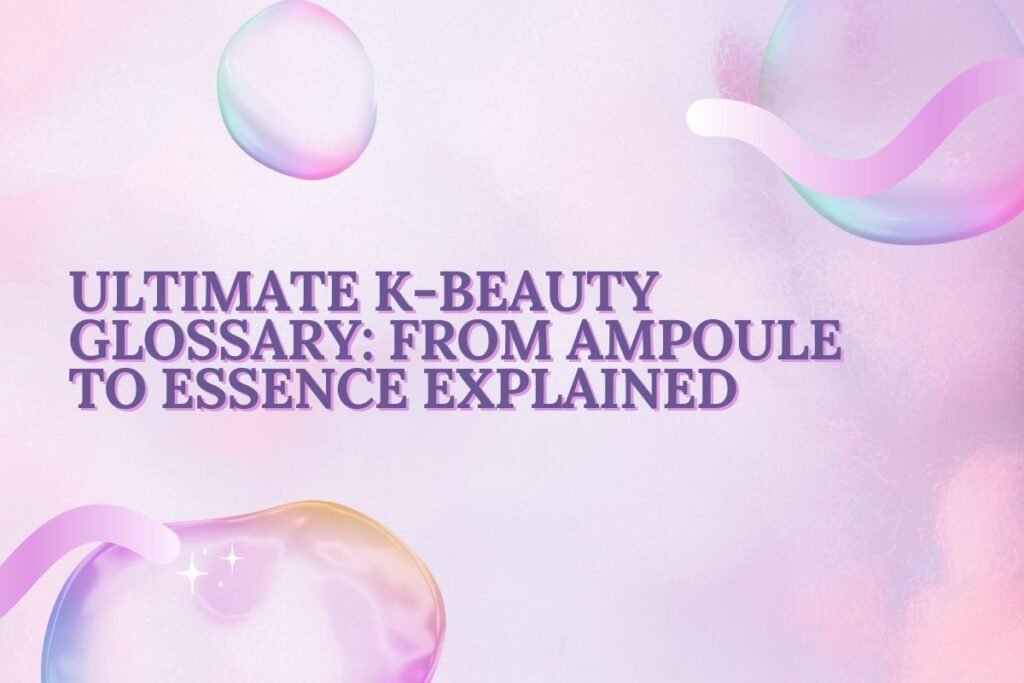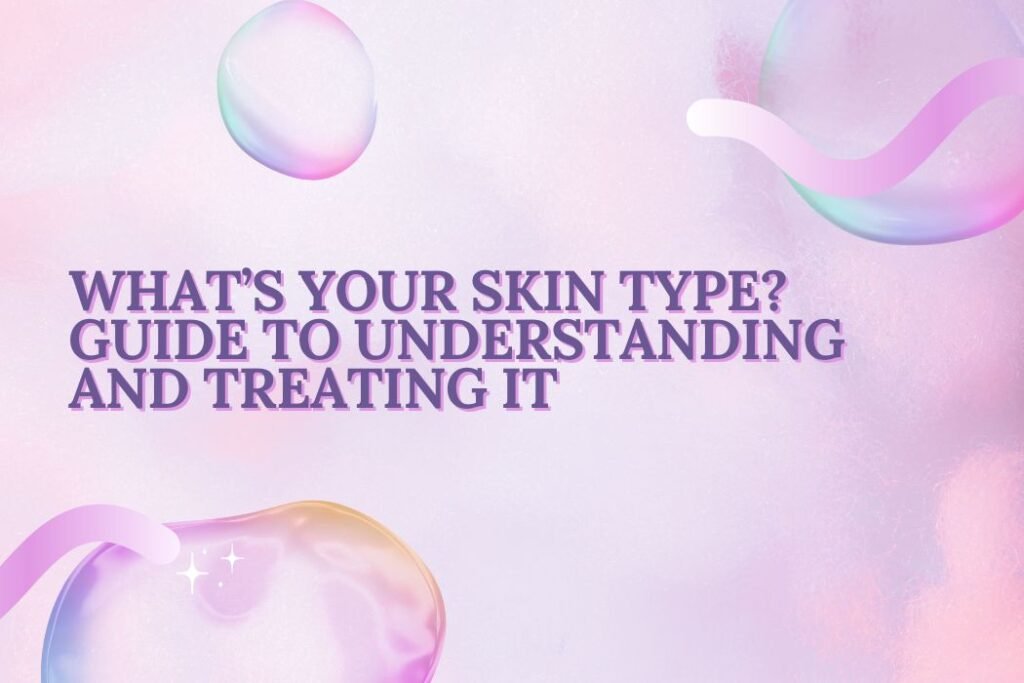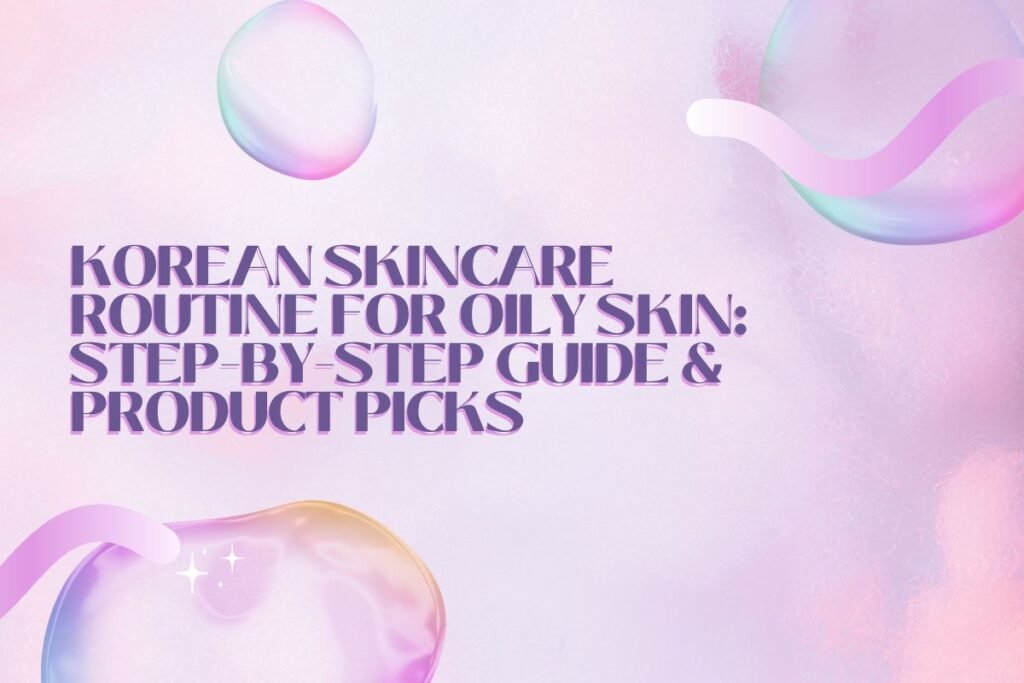Ever felt lost in the world of Korean skincare? With terms like ampoule, emulsion, and essence, it’s easy to feel overwhelmed. But behind the jargon is a thoughtful, effective approach to achieving your healthiest, most radiant skin.
Korean Beauty, or K-Beauty, prioritises skin health through hydration, nourishment, and protection. It’s less about a quick fix and more about a consistent, gentle routine. This glossary is your go-to guide to decode the most important K-Beauty terms, so you can confidently build a routine that works for you and finally achieve that coveted “glass skin.”
Core Concepts & Philosophies
Before diving into products, it’s essential to understand the mindset behind K-Beauty.
10-Step Korean Skincare Routine
This is the most famous K-Beauty concept, but don’t let it scare you! The 10-step routine is a comprehensive framework, not a strict daily rule. It’s about having the right products available to address your skin’s needs, which can change daily. The core principle is layering products from the thinnest to thickest consistency.
Double Cleansing
This is a non-negotiable cornerstone of K-Beauty. It involves a two-step cleansing process to ensure your skin is perfectly clean without being stripped of its natural oils.
Step 1: Oil-Based Cleanser: This dissolves oil-based impurities like makeup, sunscreen, and sebum.
Step 2: Water-Based Cleanser: This removes water-based debris like sweat and dirt.
Glass Skin (유리 피부 – Yuri Pibu)
This popular term describes skin that is so healthy, hydrated, and luminous that it appears poreless, clear, and translucent—like a sheet of glass. It’s the ultimate goal of many K-Beauty routines, emphasising skin health from within.
K-Beauty Product Glossary
Here are the key product types, explained in the general order you might use them.
Ampoule
An ampoule is a supercharged, highly concentrated serum. Think of it as a potent booster shot for your skin. It contains a higher concentration of active ingredients designed to target specific concerns like dark spots, severe dryness, or loss of elasticity.
How to Use: Typically used after an essence or serum for a limited time to address an acute skin issue.
BHA (Beta Hydroxy Acid)
BHA is a chemical exfoliant that is oil-soluble, meaning it can penetrate deep into the pores to clear out excess sebum and dead skin cells. Salicylic acid is the most common BHA.
Best For: Oily, acne-prone skin and reducing blackheads.
Cica
Short for Centella Asiatica, Cica is a medicinal herb beloved for its powerful soothing and healing properties. Products with Cica are excellent for calming inflammation, reducing redness, and repairing a damaged skin barrier.
Best For: Sensitive, irritated, or acne-prone skin.
Cushion Compact
A cushion compact is a sponge soaked in a liquid foundation, BB cream, or CC cream, housed in a compact. It provides lightweight, buildable coverage with a dewy finish and often includes sun protection. It’s perfect for on-the-go touch-ups.
Emulsion
An emulsion is a lightweight, water-based moisturiser. It’s thinner than a traditional cream but thicker than a serum. It provides a layer of hydration without feeling heavy or greasy.
Best For: Oily or combination skin types as a final moisturiser, or for dry skin types as an extra layer of hydration before a heavier cream.
Essence
Often considered the heart of the Korean skincare routine, an essence is a lightweight, watery liquid packed with hydrating and nourishing ingredients. Its primary job is to drench the skin with hydration, which helps the following products in your routine absorb more effectively.
Essence vs. Serum: An essence is focused on hydration and has a thinner consistency, while a serum is more viscous and delivers concentrated active ingredients to target specific problems.
First Essence
Used immediately after cleansing (and toning, if you use one), a First Essence is a highly concentrated fermented liquid. It’s designed to balance the skin’s pH, boost hydration, and increase cell turnover, creating the perfect canvas for the rest of your routine.
Pimple Patch / Acne Patch
These are small, hydrocolloid stickers placed directly over a pimple. They work by absorbing pus and oil from the blemish, creating a moist environment to speed up healing, and protecting it from bacteria (and your picking fingers!).
Serum
A serum is a viscous treatment product formulated with a high concentration of active ingredients to target specific skin concerns like fine lines, hyperpigmentation, or dullness. It’s applied after your essence and before your moisturiser.
Sheet Mask
A sheet mask is a thin sheet made of cotton, hydrogel, or biocellulose that is saturated in a nutrient-rich essence or serum. You leave it on your face for 15-20 minutes to give your skin a concentrated dose of hydration and treatment. It’s a K-Beauty staple for an instant glow.
Sleeping Pack / Sleeping Mask
A sleeping pack is an overnight moisturiser that you apply as the very last step of your nighttime routine. It creates a protective barrier on your skin to lock in moisture and all the products you applied underneath, allowing you to wake up with plump, hydrated skin.
Snail Mucin
One of the most famous K-Beauty ingredients, snail mucin (or snail secretion filtrate) is praised for its ability to hydrate, repair skin damage, stimulate collagen production, and fade acne scars. It is harvested in a cruelty-free manner and is suitable for most skin types.
Sunscreen (SPF & PA)
Sun protection is the most critical step for preventing premature aging. K-Beauty sunscreens are renowned for their lightweight, elegant formulas that don’t leave a white cast.
SPF (Sun Protection Factor): Measures protection against UVB rays, which cause sunburn.
PA (Protection Grade of UVA): Measures protection against UVA rays, which cause aging and hyperpigmentation. The rating system uses plus signs: $PA+$ (some protection), $PA++$ (moderate), $PA+++$ (high), and $PA++++$ (extremely high). Always look for “Broad Spectrum” and a high PA rating.
Toner
In the K-Beauty world, toners are different from the harsh, alcohol-based astringents of the past. A Korean toner is a hydrating liquid used to remove any last traces of cleanser, balance your skin’s pH, and provide an initial layer of hydration. This preps your skin to better absorb the products that follow.
Frequently Asked Questions (FAQ)
1. Do I really need to use all 10 steps of the Korean skincare routine every day?
Absolutely not! Think of the 10-step routine as a complete guide or a menu, not a strict daily requirement. The non-negotiable core of a great routine for a beginner is Cleanse, Moisturise, and Protect (Sunscreen). You can then add in treatment steps like an essence, serum, or an exfoliant as your skin needs them. Listening to your skin is the most important step of all.
2. What’s the real difference between an essence and a serum? Do I need both?
This is a very common question. The simplest way to differentiate them is by their primary function:
- Essence = Hydration: Its main job is to deliver a potent dose of watery hydration, which makes your skin plump and helps the rest of your products absorb better.
- Serum = Treatment: It’s generally thicker and contains a higher concentration of active ingredients to target specific concerns like wrinkles, dark spots, or acne.
Whether you need both depends on your skin. If you have very dry or dehydrated skin, using both can be a game-changer. If you have oily skin or prefer a minimal routine, you might just choose one that targets your main concern.
3. What is the correct order to apply K-Beauty products?
The golden rule is to apply your products from the thinnest consistency to the thickest. This allows each layer to be absorbed properly without being blocked by a heavier product. A typical full routine follows this order:
- Oil-Based Cleanser
- Water-Based Cleanser
- Toner
- Essence
- Serum / Ampoule
- Eye Cream
- Moisturiser (Lotion, Emulsion, or Cream)
- AM: Sunscreen | PM: Sleeping Pack
4. How do I choose the right products for my specific skin type?
Start by identifying your main skin type (dry, oily, combination, sensitive) and your top concern. Then, look for key ingredients mentioned in the glossary:
- For Oily or Acne-Prone Skin: Look for products with BHA (Salicylic Acid) and soothing ingredients like Cica. Choose lightweight moisturisers like an emulsion.
- For Dry Skin: Seek out intensely hydrating products like a sleeping pack and ingredients like hyaluronic acid and ceramides. An essence is a must-have.
- For Sensitive Skin: Cica is your best friend. Look for products that are fragrance-free and designed to soothe and repair the skin barrier.
- For Ageing Concerns or Dullness: Use a serum or ampoule with targeted ingredients like ginseng or vitamin C, and never skip your sunscreen with a high PA rating (PA++++).
5. When do I apply sunscreen in my routine?
Sunscreen is always the final step of your morning skincare routine. Apply it after your moisturiser has had a minute to absorb and before you apply any makeup. This ensures it forms an effective, uninterrupted shield to protect your skin from damaging UV rays throughout the day.




